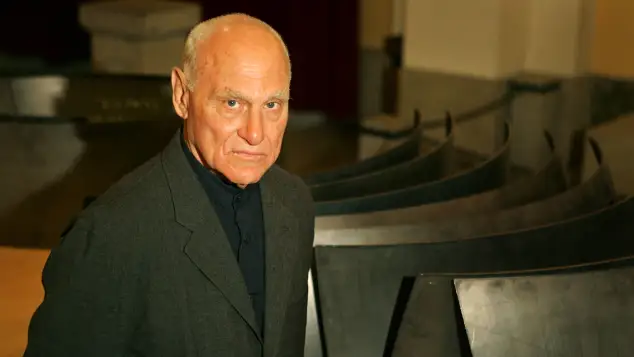- Richard Serra has paid away at 85
- He was known to the world as a great sculptor
- Tributes are pouring in now
It's truly the end of an era in modern art. Richard's passing marks the end of an era for an artist who pushed the boundaries of sculpture and challenged the viewer's perspective through his imposing, site-specific works.
Steel Curves That Stirred Souls!
In a somber New York home, the art world lost a true behemoth. Richard Serra, the American artist famed for his gravity-defying steel sculptures, has left us, his legacy as solid and imposing as his art. Pneumonia was the culprit, as confirmed by his lawyer, John Silberman.
Serra, a man who toyed with the impossible, leaves behind works like "The Matter of Time," a 1,034-tonne testament to his genius that dominates the Guggenheim Museum Bilbao. His art wasn't just seen; it was felt, eliciting visceral reactions from viewers worldwide. "I’m working at the edge of what’s possible," Serra once proclaimed, and indeed he was.
Born to a diverse heritage in San Francisco (1939), the young Serra found his muse in the launching of ships and the encouragement of his artistic mother. Yale saw his talents and his mischief, suspending him for a prank on Robert Rauschenberg involving a live chicken!
Serra's epiphany struck in Spain, under the gaze of Velázquez's "Las Meninas." His art evolved, focusing on the viewer as the subject. "The content is you!" he insisted. If you didn't step into his work, engage with it, it remained an enigma.
The '60s saw Serra's rise in New York's underground scene, experimenting with unconventional materials. His "splash pieces" were just the beginning. The '70s brought site-specific masterpieces and a controversial piece, "Tilted Arc," which divided public opinion and was eventually dismantled, a move Serra likened to a death in the family.
Despite early controversies, Serra's later works, like London's "Fulcrum," won hearts. His "Torqued Ellipses" and "The Matter of Time" solidified his status as a sculptural legend. Even in his 80s, he was creating "heavy" art, defying the digital era's ephemeral trends.
Also interesting:
Married to Clara Weyergraf since 1981, Serra remained a force in art until his last breath. His absence leaves a void in the world of sculpture, his influence enduring as the steel he so masterfully bent.






